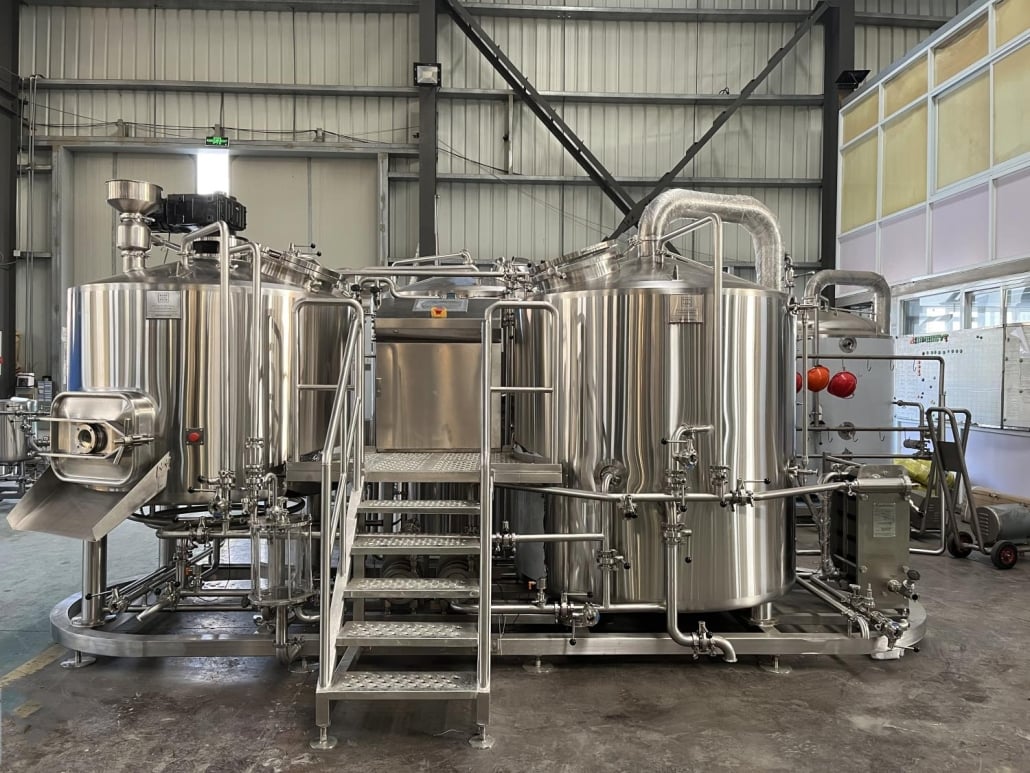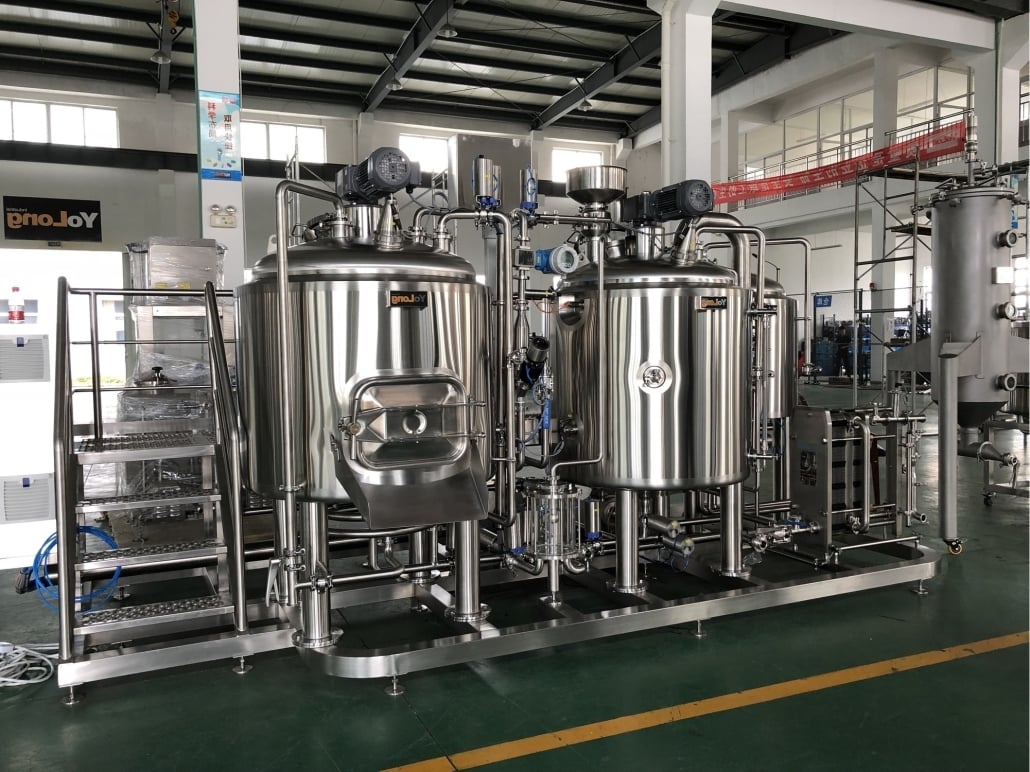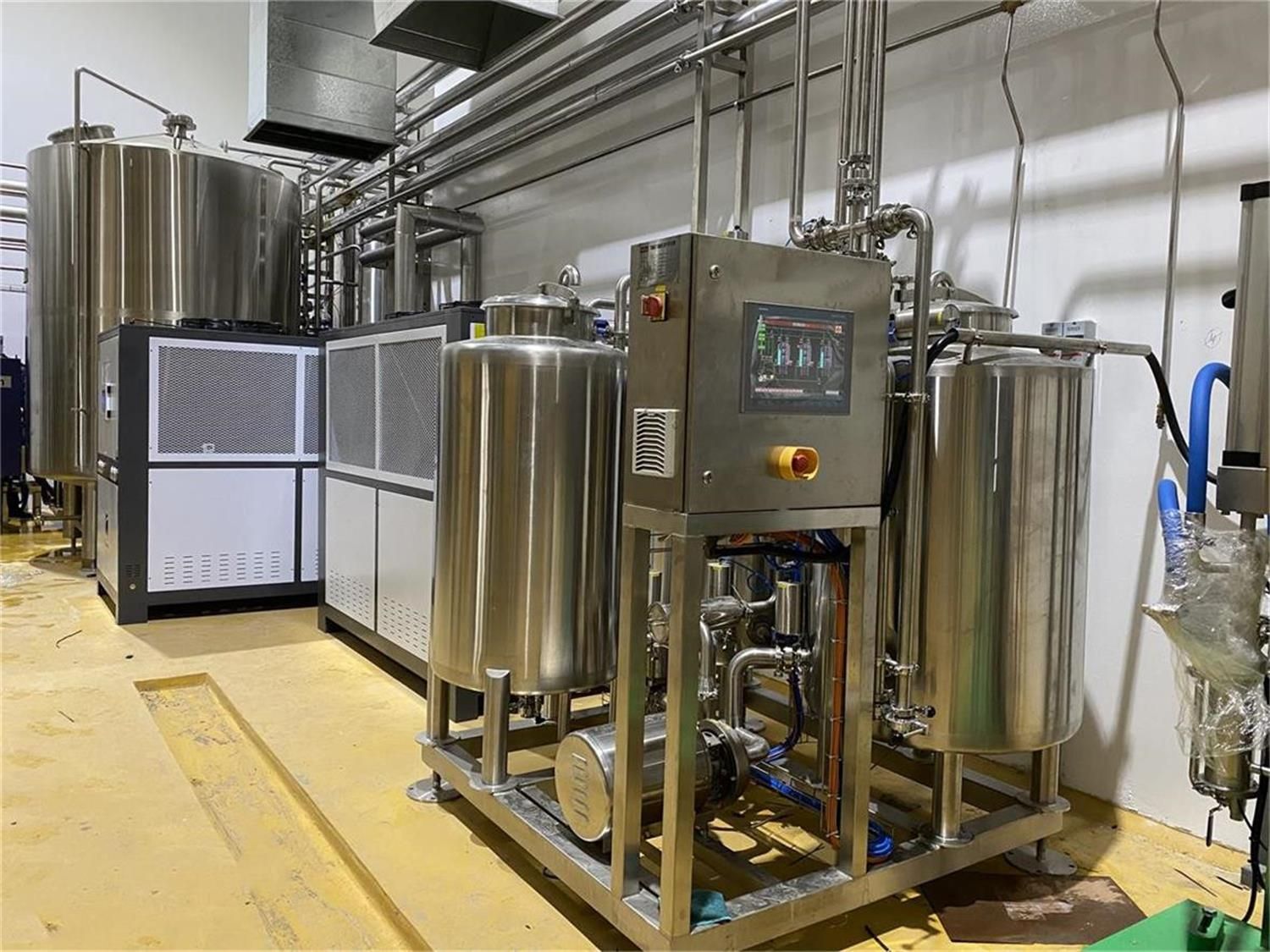nano brewery startup
The craft beer industry is booming, with a growing thirst for unique and flavorful brews. But for aspiring brewers, the idea of opening a full-fledged brewery can seem daunting. Enter the nano brewery: a smaller-scale brewing operation that allows passionate beer enthusiasts to experiment, build a brand, and share their creations with the world.
This comprehensive guide delves into the exciting world of nano brewery startups, equipping you with the knowledge and resources to navigate the brewing process, business planning, and everything in between. So, grab your metaphorical hopsack, and let’s embark on this hoppy adventure!
What is a Nano Brewery?
Imagine a brewery that feels more like a friend’s garage with top-notch equipment, brewing small batches of exceptional beer. That’s the essence of a nano brewery. Typically, these breweries produce beers in batches of 3 barrels (31 gallons) or less, allowing for greater flexibility and creative exploration.
Compared to their larger counterparts, nano breweries offer several advantages:
- Lower Startup Costs: Smaller equipment and production volume translate to a more manageable financial investment.
- Rapid Experimentation: Smaller batches enable brewers to test new recipes and brewing techniques frequently, fostering innovation.
- Community Focus: Nano breweries often cultivate a close-knit relationship with their local communities, creating a vibrant gathering space.
However, keep in mind that a smaller production volume also means potentially lower profits. Carefully consider your target market and sales strategy to ensure your nano brewery thrives.

Nano Brewery Equipment: Brewing Your Dream
The heart of any brewery is its equipment. While nano breweries utilize smaller systems, the core brewing process remains the same. Here’s a breakdown of the essential equipment:
- Brewhouse: This is where the magic happens! The brewhouse consists of a mash tun for steeping grains, a lauter tun for separating the wort (liquid extract), a kettle for boiling the wort with hops, and a whirlpool for clarifying the wort.
- Fermentation Tanks: These stainless steel vessels house the wort after yeast is pitched, allowing fermentation to take place and transform the wort into beer.
- Brite Tanks: Once fermentation is complete, the beer is transferred to brite tanks for conditioning, carbonation, and final adjustments before packaging.
- Kegging System: Kegs are a popular packaging option for nano breweries, allowing for easy distribution and taproom sales.
- Bottling Line (Optional): While less common for nano breweries due to higher cost, some may choose to bottle their beers for retail sales.
Choosing the Right Equipment
Selecting the right equipment is crucial for your nano brewery’s success. Here are some factors to consider:
- Production Capacity: Align your equipment size with your projected production volume.
- Scalability: Consider equipment that can accommodate future growth if you envision expanding your operation.
- Budget: Nano brewery equipment offers a range of price points. Determine your budget and prioritize essential components.
- Used vs. New Equipment: Used equipment can be a cost-effective option, but ensure it’s in good working condition.
Here’s a table summarizing typical equipment costs for a nano brewery startup:
| Equipment | Price Range |
|---|---|
| Brewhouse (3-barrel system) | $20,000 – $50,000 |
| Fermentation Tanks (2- 3 barrels each) | $5,000 – $10,000 per tank |
| Brite Tanks (2- 3 barrels each) | $5,000 – $10,000 per tank |
| Kegging System (including kegs) | $5,000 – $10,000 |
| Bottling Line (optional) | $10,000 – $20,000+ |
Remember: These are estimated ranges, and actual costs can vary depending on brand, features, and customization.
The Brewing Process in a Nano Brewery
Now that you have your equipment in place, let’s delve into the brewing process itself. While there can be variations depending on the specific beer style, here’s a general overview:
- Malting and Milling: The brewing process begins with malted barley, which is crushed in a mill to release the starches that will be converted into sugars during mashing.
- Mashing: Crushed grains are steeped in hot water, allowing enzymes to break down starches into fermentable sugars, creating the wort.
- Lautering: The wort is separated from the spent grain husks (called draff) through a lautering process. This clarifies the wort and prepares it for boiling.
- Boiling: The wort is transferred to the kettle and boiled. During this stage, hops are added, imparting bitterness, aroma, and flavor to the beer. Additionally, the boiling process helps sterilize the wort and concentrate the sugars.
- Whirlpooling: The wort is spun rapidly in a whirlpool tank, causing any remaining solids to settle out, resulting in a clearer wort for fermentation.
- Cooling: The wort is then cooled to a specific temperature appropriate for the chosen yeast strain.
- Fermentation: Cooled wort is transferred to fermentation tanks where yeast is pitched. Yeast consumes the sugars in the wort, producing alcohol and carbon dioxide, transforming the wort into beer.
- Conditioning: Once fermentation is complete, the beer is transferred to brite tanks for conditioning. During this stage, the beer clarifies further, matures in flavor, and may be carbonated.
- Packaging: Finally, the finished beer is packaged in kegs or bottles for distribution or sale on-site at your taproom (if applicable).
The Beauty of Small Batches:
Nano breweries excel at experimentation and innovation due to the flexibility of small-batch brewing. Brewers can test new recipes, adjust ingredients and techniques, and quickly receive feedback from customers. This allows them to refine their offerings and develop a unique brand identity.
Scaling Up for Success:
As your nano brewery gains traction, you may consider expanding production. Here are some ways to scale up without losing the essence of a small-batch brewery:
- Increase Fermentation Capacity: Adding more fermentation tanks allows you to brew more batches concurrently.
- Utilize Larger Brite Tanks: Larger brite tanks enable longer conditioning times and potentially higher carbonation levels for certain beer styles.
- Contract Brewing: Partnering with a larger brewery allows you to produce larger batches of a specific beer while maintaining control over your core recipes.
Remember, scaling up should be a strategic decision based on market demand and your long-term vision for the brewery.
Building Your Nano Brewery Empire
Opening a nano brewery is more than just brewing exceptional beer. It requires a well-crafted business plan that outlines your financial goals, marketing strategy, and overall operational framework. Here are some key aspects to consider:
- Concept and Brand Identity: Develop a clear brand identity that reflects your brewing philosophy and target audience. This includes crafting a catchy name, creating a memorable logo, and establishing a consistent brand voice.
- Market Research: Conduct thorough market research to understand your local craft beer scene, competitor landscape, and potential customer base. Analyze consumer preferences and identify any niche markets you can cater to.
- Licensing and Permits: Research and obtain all necessary federal and state licenses and permits required to operate a brewery. This can be a complex process, so consulting with a lawyer specializing in alcohol beverage laws is recommended.
- Financial Projections: Develop a detailed financial plan that includes startup costs, projected revenue and expenses, and a break-even analysis to determine how long it will take for your brewery to become profitable.
- Funding Options: Explore various funding options such as personal savings, loans, or seeking investors. Be prepared to present your business plan to potential lenders or investors.
- Location, Location, Location: Finding the right location is crucial. Consider factors like proximity to your target market, accessibility, zoning regulations, and potential for a taproom if you plan to sell on-site.
Building a Strong Team:
While passion for brewing is essential, you may need to assemble a team with complementary skills. Consider seeking expertise in areas like accounting, marketing, legal compliance, and potentially sales and distribution.
Marketing and Sales Strategies for Your Nano Brewery
In today’s competitive craft beer market, effectively marketing and selling your brews is essential. Here are some strategies to get your nano brewery noticed:
- Taproom Experience: If you have a taproom, create a welcoming and inviting atmosphere where customers can sample your beers, connect with your brand, and learn about your brewing process.
- Social Media Marketing: Leverage social media platforms like Instagram, Facebook, and Twitter to build a community around your brewery, showcase your beers, and engage with potential customers.
- Events and Collaborations: Participating in local beer festivals, farmers’ markets, and special events is a great way to gain exposure and connect with new customers. Partnering with other local businesses for collaborations can also be a fun and effective marketing
- Partnerships with Restaurants and Bars: Distribute your kegs to local restaurants and bars that cater to craft beer enthusiasts. This can significantly expand your reach and get your beers in front of a wider audience.
- Eye-Catching Labels and Packaging: Design unique and visually appealing labels and packaging that reflect your brand identity and make your beers stand out on shelves or taps.
- Loyalty Programs: Implement loyalty programs to reward repeat customers and encourage them to try your new releases.
- Public Relations and Media Outreach: Develop relationships with local media outlets and bloggers to generate positive press coverage for your brewery.
Finding Your Niche:
Nano breweries can thrive by carving out a niche in the market. This could involve specializing in a particular beer style, using unique ingredients, or focusing on sustainability practices.
Utilizing Technology:
Embrace technology to streamline your operations and enhance customer experience. Consider using online ordering systems, point-of-sale systems for taprooms, and social media management tools.

FAQs
Q: How much does it cost to open a nano brewery?
A: The cost of opening a nano brewery can vary depending on several factors, including equipment costs, location, and licensing fees. However, a typical range can be anywhere from $50,000 to $200,000 or more. Refer to the equipment cost table in the “Nano Brewery Equipment” section for a breakdown of estimated equipment prices.
Q: What regulations do I need to comply with to open a nano brewery?
A: Regulations for opening a brewery can vary by state and locality. Generally, you will need to obtain federal and state licenses for alcohol production and sales. Consulting with a lawyer specializing in alcohol beverage laws in your area is highly recommended to ensure you comply with all necessary regulations.
Q: How do I write a business plan for my nano brewery?
A: A well-crafted business plan is essential for securing funding and charting your brewery’s course. Your plan should include details on your concept and brand identity, market research, financial projections, funding strategy, and operational plan. There are many resources available online and from the Small Business Administration (SBA) to help you write a business plan.
Q: Do I need a business license to operate a nano brewery?
A: Yes, in addition to federal and state licensing for alcohol production and sales, you will likely need a business license from your local municipality.
Q: Can I sell beer directly from my nano brewery?
A: Depending on your location’s regulations, you may be able to sell beer on-site through a taproom. Obtaining a separate license for on-site sales may be required.
Remember: These FAQs provide a general overview, and specific regulations and requirements can vary by location. It’s essential to conduct thorough research and consult with legal and financial professionals for guidance specific to your situation.
Conclusion
The world of craft beer is brimming with creativity and passion. By combining your love for brewing with a well-defined business plan and strategic marketing, your nano brewery can become a thriving community hub and a source of exceptional brews. So, unleash your inner brewmaster, embrace the challenges, and embark on this exciting journey! Remember, the key to success lies in high-quality beer, a strong brand identity, and a commitment to connecting with your customers. With dedication and a dash of hops, your nano brewery dream can become a reality.
Additional FAQs for Nano Brewery Startup
1) What batch size and tank mix optimize cash flow for a nano brewery startup?
- Commonly, a 3–5 bbl brewhouse with 2x to 4x 7–10 bbl unitanks enables double-batching into larger fermenters, improving cellar turns and reducing per-batch labor.
2) How much working capital should I plan beyond build-out and equipment?
- Plan 6–12 months of operating cash for rent, payroll, COGS, utilities, and marketing. Many nano breweries undercapitalize; aim for 25–40% of total project cost as working capital.
3) What licensing timeline should I expect in the U.S.?
- Federal TTB brewery approval averages 65–120 days once a complete application is filed; state/local permits can add 30–120+ days. Start zoning, fire, and health approvals in parallel to compress the timeline.
4) Is a taproom-first model still viable in 2025?
- Yes. Onsite sales typically carry 60–75% gross margins versus 25–45% for wholesale. A hospitality-forward taproom remains the fastest path to breakeven for nano breweries.
5) Which metrics matter most in the first year?
- Track brewhouse efficiency, fermentation cycle time, cellar turns/month, on-site vs. wholesale mix, COGS per bbl, labor hours per bbl, and packaged DO. Use these to guide pricing and production scheduling.
2025 Industry Trends: Nano Brewery Startup
- Lean buildouts: More founders are opening in 1,200–2,500 sq ft light-industrial spaces with modular utilities to limit CapEx.
- Electrification: 3–10 bbl electric/induction systems dominate urban nanos for ventilation simplicity and energy monitoring.
- Taproom resilience: Direct-to-consumer remains the margin leader; food pop-ups and limited kitchens boost dwell time without full restaurant costs.
- QA on a budget: Inline DO at knockout, ATP swabbing, and riboflavin CIP validation are becoming baseline even at nano scale.
- Price stability: Stainless and controls pricing stabilized vs. 2023; used equipment availability improved, reducing lead times.
2025 Cost and Timeline Benchmarks for Nano Breweries
| Category | Typical Range (USD) | Notes |
|---|---|---|
| 3–5 bbl brewhouse (electric) | 25,000–75,000 | Skid packages with plate chiller and basic automation |
| Unitanks (7–10 bbl each) | 6,000–14,000 | Dual-zone jackets, carb stones, sample valves |
| Glycol system (3–7 hp) | 6,500–18,000 | Size for future tank additions |
| Licensing/fees (US, all-in) | 3,000–12,000 | Federal, state, local, legal |
| Taproom buildout | 20,000–120,000 | Highly site-dependent; includes bar, draft, finishes |
| Working capital (6–12 months) | 40,000–150,000 | Payroll, rent, COGS, utilities, marketing |
| Typical lead time (equipment) | 6–12 weeks | Faster for in-stock/used gear |
Sources: Brewers Association supplier briefs (2024–2025), ProBrewer classifieds/pricing trends, vendor catalogs
Latest Research Cases
Case Study 1: Taproom-First Nano Improves Breakeven Through Cellar Turns (2025)
Background: A 4 bbl nano brewery startup in a 1,800 sq ft space targeted breakeven within 12 months.
Solution: Installed 4 bbl electric brewhouse, three 8 bbl unitanks for double-batching, inline DO at knockout, and a 10-line draft system; focused on on-premise sales and weekly releases.
Results: Reached 74% taproom sales mix, 2.2 cellar turns/month, COGS at $68/bbl for core SKUs, and breakeven in month 10; packaged DO averaged 25–40 ppb, extending shelf stability for limited wholesale.
Case Study 2: Energy and Water Savings with Heat Recovery and CIP Validation (2024)
Background: A 3 bbl nano brewery sought utility savings and consistent sanitation after rapid growth.
Solution: Added wort-to-HLT heat recovery, insulated vessels, VFD pumps, and riboflavin-tested rotating spray balls; standardized low-oxygen CIP and ATP swab program.
Results: 17–23% kWh reduction per brew, 21% water savings per CIP, and 30% fewer labor hours on cleaning; contamination incidents dropped to zero over six months.
Expert Opinions
- Scott Metzger, Brewer and Operations Consultant; former CEO, Freetail Brewing
“Design your cellar for double-batching and fast turns. The right tank mix beats a larger brewhouse if cash flow is your constraint.” - Maria Pearman, CPA, Beverage Finance Leader (author, Small Brewery Finance)
“Underfunding working capital is the number-one killer. Budget conservative sales, realistic COGS, and six months of cash to absorb seasonality.” - Dr. Charlie Bamforth, Brewing Scientist (Professor Emeritus)
“Even nanos need measurement. Temperature control, dissolved oxygen monitoring, and validated CIP underpin beer stability and reputation.”
Practical Tools and Resources
- Brewers Association – Starting a Brewery, benchmarking, safety: https://www.brewersassociation.org
- TTB Brewer’s Notice (US federal licensing): https://www.ttb.gov/beer
- SBA Business Plan templates and funding guides: https://www.sba.gov
- ProBrewer – Forums and used equipment marketplace: https://www.probrewer.com
- MBAA technical resources and podcasts: https://www.mbaa.com
- ASBC Methods of Analysis (lab protocols): https://www.asbcnet.org
- Brewfather / Brewer’s Friend (production planning, utilities): https://brewfather.app | https://www.brewersfriend.com
- OSHA brewery safety resources (electric/steam/CO2): https://www.osha.gov
- EHEDG hygienic design guidance (overview): https://www.ehedg.org
- Local guilds directory (US): https://www.brewersassociation.org/directories/guilds
Sources and further reading:
- Brewers Association 2024–2025 Supply Chain and Taproom Insights
- MBAA and ASBC technical sessions (2024–2025)
- Vendor catalogs/spec sheets for nano systems and cellar equipment
- TTB timelines and guidance documents
Last updated: 2025-09-08
Changelog: Added 5 targeted FAQs; included 2025 nano startup cost/timeline table and trends; added two recent case studies; compiled expert opinions; listed practical tools/resources with authoritative links.
Next review date & triggers: 2026-01-15 or earlier if equipment/utility pricing shifts >10%, major licensing timeline changes, or new QA/safety standards affecting nano operations.
Share this entry
Interested in learning more about Brewing Systems including additional details and pricing information? Please use the form below to contact us!
YOLONG BREWERY EQUIPMENT FAQS
- Commercial Brewery / Craft Brewery / Microbrewery / Nanobrewery
- What is The Difference Between Craft Beer and Industrial Beer?
- The Bespoke Differences In Custom Brewing Systems
- Everything You Need to Know About Kettle Souring
- How to Choose Brewing Equipment for Your business?
- How To Choose The-Best Partner To Build Your Commercial Microbrewing System?
- Two Detection Sensors That You Need To Use In Your Brewhouse System
- Remote Control Applications in Brewing Equipment/How does it work?
- How To Clean Your Brand New Brewery Tanks?

